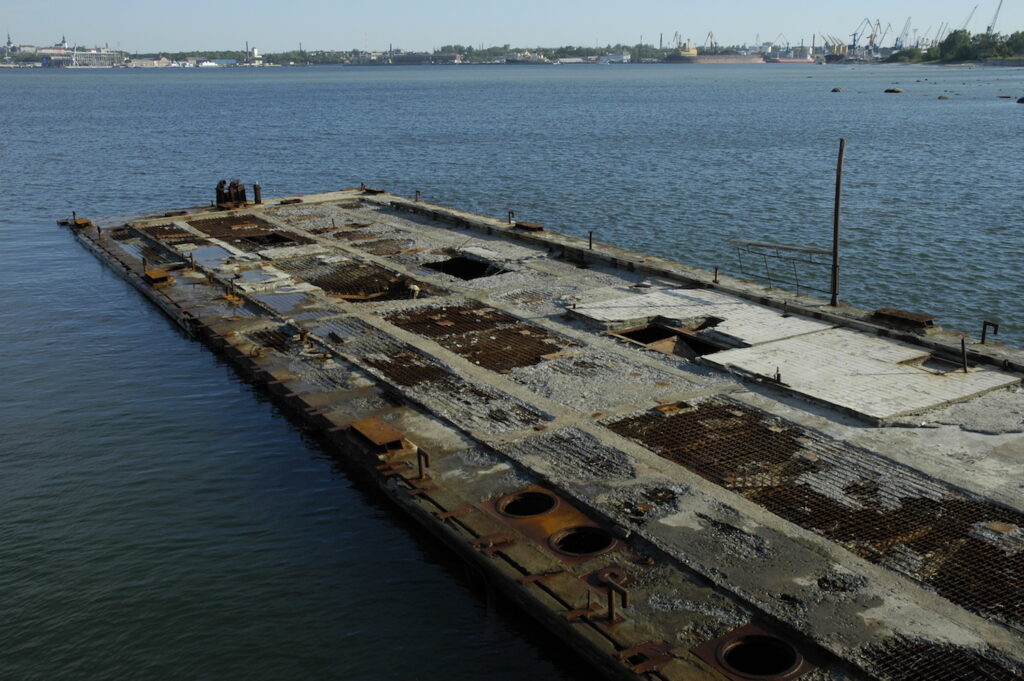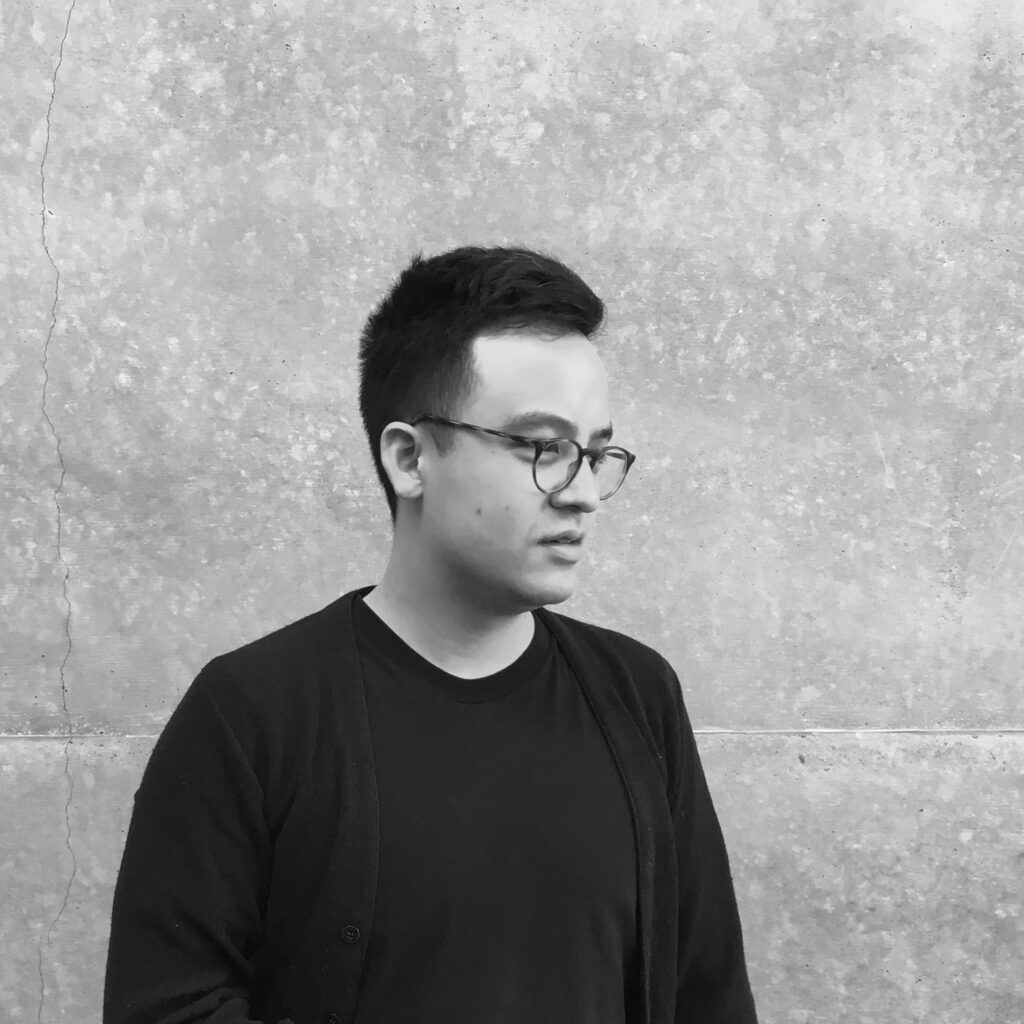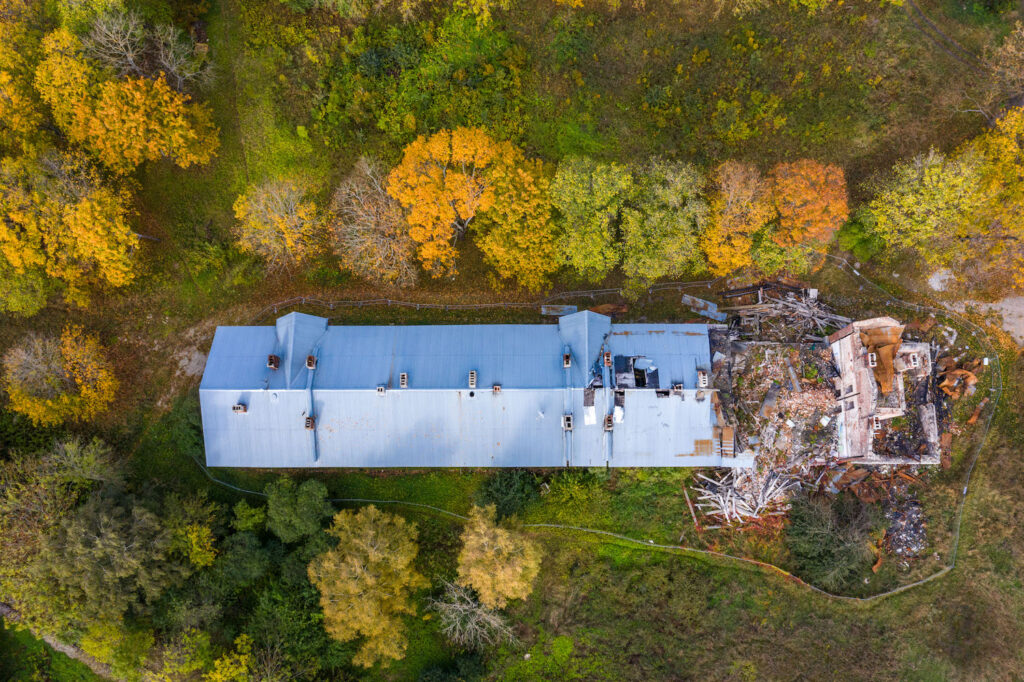If there is any feeling of blandness, or risk aversion, or scant sense of place, it is not due to insufficient bike lanes or pedestrian squares, but rather because the larger questions of what is produced and who gets to have how much have already been decided.
For a relatively frequent visitor to Tallinn, it has been astonishing to witness the speed with which the city has changed over the past few years. Arriving through the port of Tallinn at the start of a new academic year used to be a moment of comforting familiarity; now one is greeted by a rising tide of new construction. New bicycle lanes, wider sidewalks, new buildings with colourful and varied facades—a densifying urban fabric with safe pedestrian streets, active storefronts and outdoor terraces. Though the city is still recognisably Tallinn, I can’t help but miss what I remember as a slightly melancholic place in the middle of transforming into a cosmopolitan, global city.
The speed and intensity of these changes is indicative of the success that Tallinn has had over the past decade. To be able to attract this level of investment and development is a sign of confidence, and confidence not just in Tallinn, but in the future of Estonia. New development is a great source of prosperity for many, bringing with it new money, jobs and opportunities. However, these changes also highlight the particular power and influence that real estate development has over the shape of the city, something which Tallinn has few tools to grapple with. Much of the land in Tallinn went into the hands of private owners after restitution, and the city has to rely on private property owners to initiate detail plans.1 Property owners therefore have relative autonomy in deciding the outcomes of their projects, with little oversight based on a shared vision or strategy. While the city is for everyone who lives there, its shape increasingly feels as though it is dictated by the whims of a select few.
This dynamic is particularly evident in the new and forthcoming developments in Põhja-Tallinn. With their abundant waterfront sites and good connections to the city centre, the neighbourhoods of Kopli and Paljassaare are well-placed for waves of new development. Kopli in particular has gained notoriety as a rapidly gentrifying neighbourhood, with rising real estate prices and demographic changes. Rising real estate prices have also proven to be the key that unlocks the viability of several sites along the waterfront, which, after laying vacant for many years, have finally started to see new development. The first of these new projects in Noblessner and Kalaranna give us a glimpse of the Tallinn to come—high-end waterfront properties, highly specialised, branded, and property-owner-driven initiatives.

Though lacking oversight from conventional planning, these new developments are typically structured around invited architectural competitions, ostensibly to guarantee a degree of architectural and urban quality. This process is in many ways preferable to a standard request for proposals, allowing for some initial design to take place, and offering several competing visions for the area that can then be analysed in relation to each other. However, the presumed benefits of the invited architectural competition format have also come under growing criticism, as the nature of the competition limits the possibility for more radical projects.2 Since the property owner exerts considerable influence on the entire process, their specific tastes and values become the driving force of the project. For architects, the resources and time required to participate in the competitions is also making it challenging to take risks, and so they tend to rely on familiar concepts that have a proven track record in real estate development. Moreover, the presumed objectivity of the competition can easily serve to legitimise otherwise bad design and decisions, concealing them under ‘winning’ in a limited contest.
The disparity of Noblessner and Kalaranna with their surroundings as well as the individualistic, taste-driven process behind their realisation highlight an ongoing discussion on the renewed possibilities of planning in the future development of Tallinn. Already in the 2014-2020 Tallinn Development Plan, there is a noted concern for the ‘uncontrolled expansion of urban sprawl and the inexpedient use of urban space.’ It is a problem that the plan seeks to address by ‘increasing the importance of long term planning compared to a “laissez-faire model,” ‘and to make the ‘city districts more diverse, raising awareness of people regarding the quality of urban life and the urban environment.’3 The recently completed research project ‘The Unfinished City’ at the Estonian Academy of Arts also explored the possibilities of spatial planning in the future of the city, with a focus on developing public transport links, increasing proximity to nature, and accessibility through public space and affordability.4 Both of these initiatives highlight the unease about the footloose market development that has taken hold in Tallinn. While lax planning restrictions and requirements have made real estate development particularly attractive, once the investments start flowing, it is difficult to rein them in.

But what do we even mean when we talk about planning today? We might imagine planning as a way to tame the avarice of market development, serving as a buffer for those who are vulnerable or unable to partake in its gains. Or maybe we could imagine it as a way to direct resources more strategically to where they are needed most. But, steeped in a deep ideological legacy, the opposition between planning and free market development is perhaps too easily taken for granted. We should remind ourselves that the shift to free market development was essentially a repudiation of post-war planning, as the planners’ claims to objectivity and expertise were fundamentally inferior to the price signals of the market. With the neoliberal turn, privatisation and deregulation were supposed to rein in the ego of the planners, and to remake the state in the image of the market. Neoliberal rationality is the art of governing through economic reasoning, and it has permeated all levels of public bureaucracy. Improvements to urban quality, social welfare, sustainability are not framed in terms of politics, justice or equality, but their presumed economic benefits. Neoliberalism does not govern through plans, but, as Wendy Brown puts it, through ‘soft power’, drawing on consensus and buy-in rather than violence, dictatorial command, or even overt political platforms.5 The vision of a greener, denser and more liveable city is simultaneously that of flourishing real estate capital.
Thus, we may already recognise the fruits of neoliberal ‘planning’ in the developments of Põhja-Tallinn. Kalaranna and Noblessner check many boxes of urban design orthodoxy with their varied facades and architectural elements, active ground floors offering high-quality services, and safe pedestrian environments. Kalaranna quarter boasts of its ’12 residential buildings with restaurants, boutiques and commercial spaces, centred around a square of almost the size of the Town Hall Square with outdoor cafes and cultural events.’6 The industrial heritage of the Kopli and Paljassaare peninsulas also plays a key role in the ostensible diversity of the projects, appearing to symbolise values other than that of real estate capital by lending an air of creativity and grit, which in turn only heightens the unique desirability of the area. Noblessner, a former submarine shipyard of the Russian Empire, features several buildings refurbished as venues for events and creatives—‘Noblessner means cultural events, arts, business, creativity and maritime culture. Everything old will be renovated, everything new has been carefully thought through. Welcome!’7

The forthcoming developments in the area borrow heavily from the playbook set out by Kalaranna and Noblessner. The old rubber factory in Põhjala, for example, serves as the creative anchor for Bekkeri City on the western waterfront. The development by Logman Invest highlights the Slip—‘[b]uilt in 1914 to launch destroyers and other military vessels, the Slip will house the cultural heart of the district. Come to eat, drink and relax.’8 Aerial renderings of Hundipea, a project on the eastern waterfront by the property development company Wolfscape, include carefully placed industrial cranes dotting the waterfront. Sustainability has also become a key component of these projects, as the market for ethical consumption and environmental responsibility has grown. Hundipea aims to pilot the first climate-neutral neighbourhood in Estonia. The design promises ‘green and walkable areas with residential and commercial buildings,’ and ‘a smart living environment for green businesses to flourish.’9 At the same time, Ecobay to the north of it ‘offer[s] its habitants plenty of opportunities and services in order to lead a healthy lifestyle. Ecobay will be a modern society where energy and other resources will be used economically.’10
Sustainable, Healthy, Innovative, Creative, Diverse, Lively. The websites of these developments feature touching videos of happy and beautiful people enjoying the good life. The sea features prominently—an endless horizon of possibilities, bordered with marinas full of appropriately-sized boats and sun-drenched boardwalks. It is possible that the overwhelming sense of sameness that one gets when watching them is not due to any lack of planning or vision, but precisely what was intended. Granted, one could argue that many of these developments are highly responsible, especially in comparison to the real-estate boom projects of the ‘90s. They carefully follow the latest urban issues and concerns, and take pains to preserve the industrial heritage of the area. They promote healthy, creative, sustainable lifestyles that should set the model for a 21st-century city. If there is any feeling of blandness, or risk aversion, or scant sense of place, it is not due to insufficient bike lanes or pedestrian squares, but rather because the larger questions of what is produced and who gets to have how much have already been decided.

As the political and economic significance of built environment has grown, cities are no longer drawn up on drawing boards, but constructed through a complex array of contracts, spreadsheets, and financial instruments. While there is no denying that there are physical, built outcomes that can and should be designed with craft and care, at the end of it all, real estate capital reigns supreme. Each development must be sold for X amount of euros per square meter. Mortgages and loans will be taken to pay for homes, and the state will subsidise where possible in order to support the market. As you continue to funnel monthly payments into the most expensive purchase of your life, you are hoping that at some point you can sell it off and get a return on the proceeds. No amount of architectural style or urban identity will change this.
In Junkspace, Rem Koolhaas writes, ‘Identity is the new junk food for the dispossessed, globalization’s fodder for the disenfranchised…’11 If Junkspace is the residue left by mankind as the apotheosis of ¥€$12, then it is also the city at the end of history—a post-ideological city, a collage city of forms without Utopia. Architects and urbanists have long prided themselves on their capacity to improve people’s lives through functional, meaningful interventions in the built environment, and to create a sense of place through engagement with local communities and contexts. But these strategies can be truly transformative only if they challenge the fundamental logic of real estate capital—no spatial or architectural form alone will be enough. As Koolhaas adds—instead of Public Life, we have ‘Public Space™’.13 If not a Sustainable, Healthy, Innovative, Creative, Diverse, and Lively City, then what? A crisis of architectural imagination, perhaps.

LEONARD MA is a Canadian architect based in Helsinki. He is a member of New Academy and teaches Urban Studies and Architecture at the Estonian Academy of Arts. His research focuses on neoliberalism, financialisation, and the legacy of the welfare state, and has been published in E-flux, The Avery Review, and AA files.
HEADER: The Kopli Lines. Photo: Raigo Tõnisalu, Fund Ehitus
PUBLISHED: Maja 108 (spring 2022) with main topic Opening Tallinn to the Sea
1 City Unfinished. Urban Planning Visions and Spatial Scenarios of Tallinn (Estonian Academy of Arts Faculty of Architecture, E.L.L Real Estate, 2017), 26
2 Kaja Pae interview with Kaidi Põldoja, Paco Ulman, Maja, 1/2022, 30, https://ajakirimaja.ee/en/visioning/
3 Tallinn City Council, Tallinn Development Plan 2014-2020, https://www.tallinn.ee/eng/Tallinn-Development-Plan,
4 City Unfinished. Urban Planning Visions and Spatial Scenarios of Tallinn (Estonian Academy of Arts Faculty of Architecture, E.L.L Real Estate, 2017), 6.
5 Wendy Brown, Undoing the Demos: Neoliberalism’s Stealth Revolution (Princeton University Press, 2015), 35.
6 https://kalaranna8.com/en/
7 https://noblessner.ee/en/explore-noblessner/#/
8 https://bekkericity.ee/home
9 https://www.wolfscape.eu/en/hundipea
10 http://www.ecobay.ee/?page_id=689&lang=en
11 Rem Koolhaas, „Junkspace“, October, 100/2002, 175–190.
12 Editor’s note: yen, euro, dollar. Koolhaas’s symbol for the power of capital.
13 Ibid.





